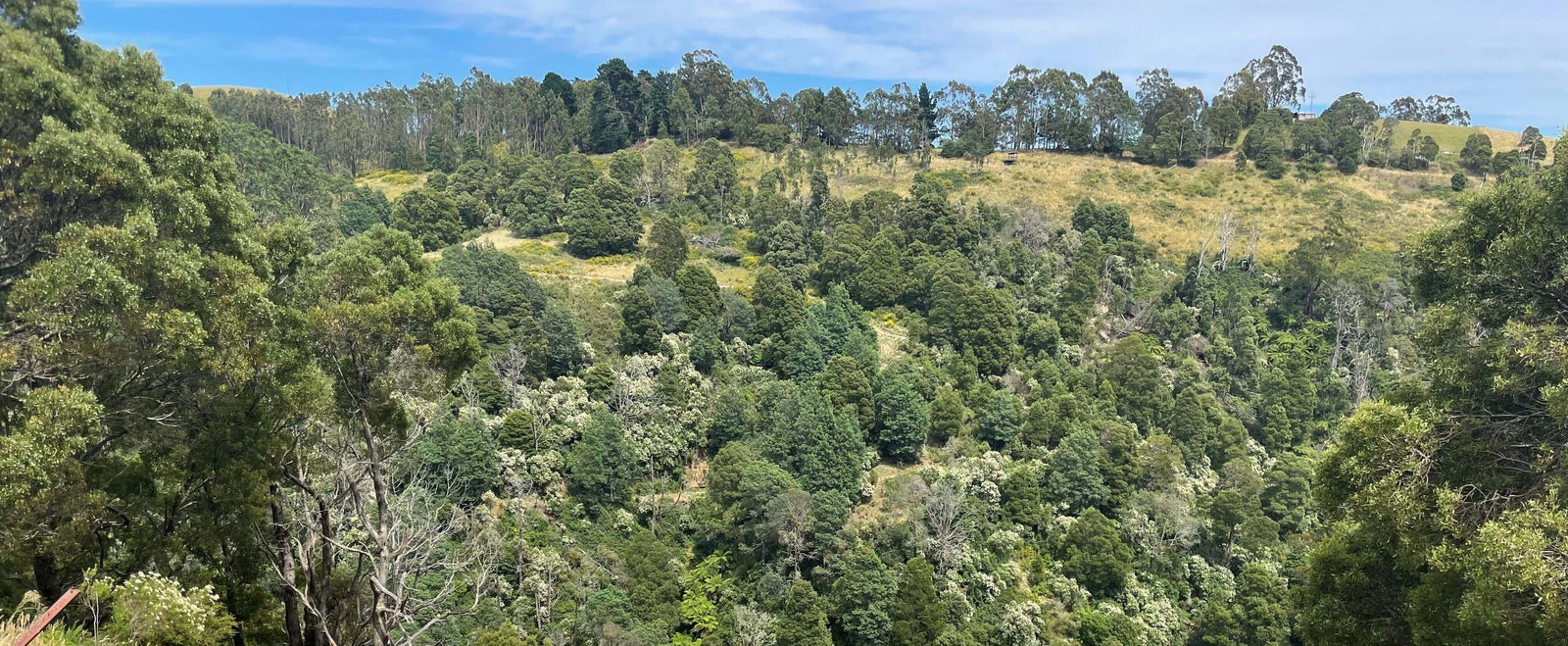Located on Kurnai Country in Boolarra South, the property called Lyrebird will build on Greenfleet’s extensive work in Victoria’s Gippsland region.
Previously cleared for grazing, this property has been revegetated to deliver climate action and create habitat for species. These include koalas, the Swift Parrot, Gang-gang Cockatoo, and Greater Glider; an endangered species that has been heavily impacted by land clearing.
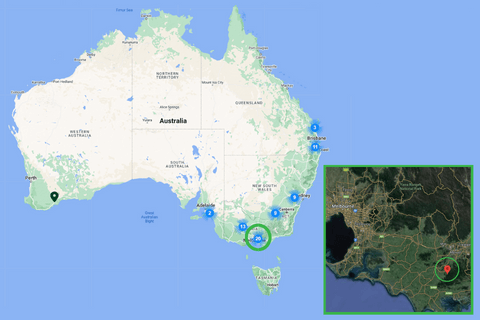
Location & Map
Lyrebird is located within the Strzelecki Ranges on Kurnai Country, about an hour east of Leongatha, Victoria. This 36-hectare property is being revegetated with native species to restore the ecosystems that existed prior to land clearing.
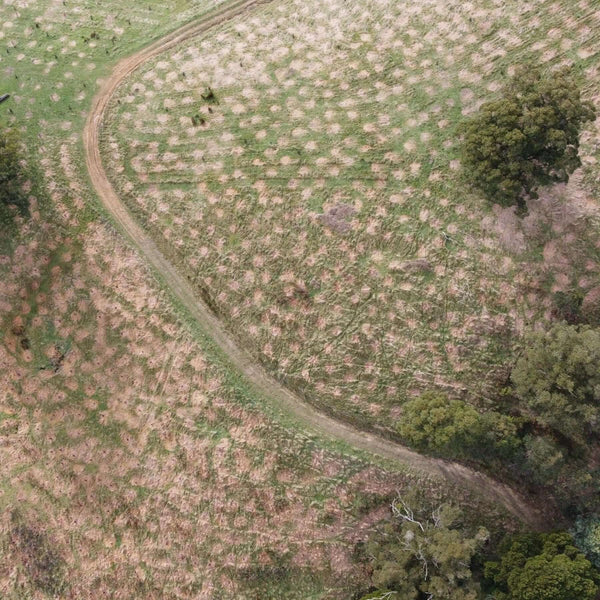
Species Selection & Revegetation Approach
Between 2022 and 2023, Greenfleet planted 21 locally native species across this property. Some of these species include Silver Wattle (Acacia dealbata), Musk Daisy Bush (Olearia argophylla), and the Stzrelecki Gum (Eucalyptus strzeleckii); a critically endangered eucalypt species endemic to this region.
The seedlings were planted directly into the soil at Lyrebird and some trees planted near the remnant vegetation were guarded to reduce browsing pressure from wallabies. Once the trees are established and the risk from browsing has been reduced, the guards will be removed.
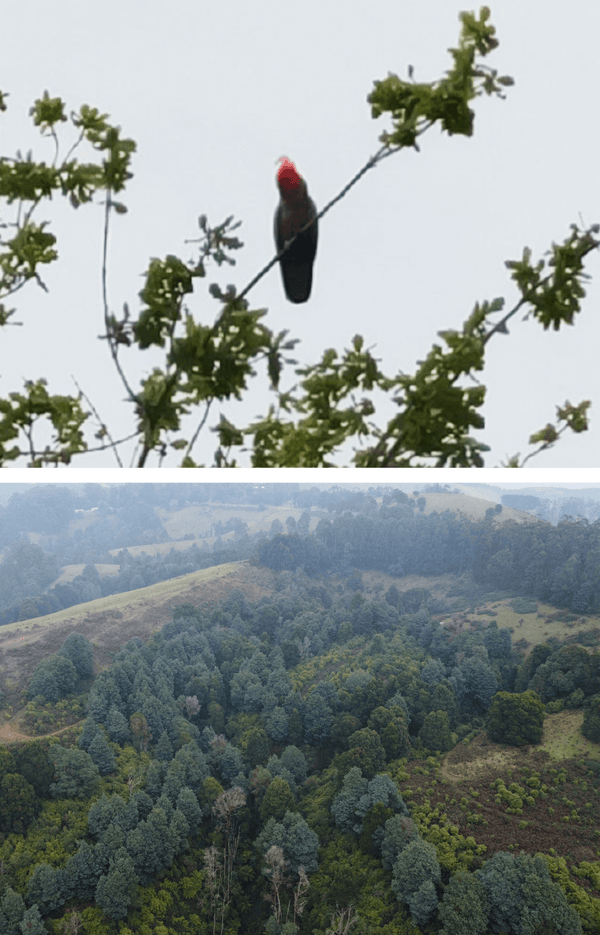
Wildlife Habitat Restoration
There are many species that will be able to use the native forest at Lyrebird as potential habitat once the planting becomes established. There are known populations of koalas on adjacent sites and multiple eucalypt species included in the revegetation plan will help extend their habitat and food sources. This includes Manna Gum (Eucalyptus viminalis), Blue Gum (Eucalyptus globulus) and Yellow Stringybark (Eucalyptus muelleriana).
This revegetation project will also provide potential habitat to many native birds including the Gang-gang Cockatoo, White-throated Needletail and the Swift Parrot.
Found only in South Eastern Australia, the extremely Swift Parrot is critically endangered due to habitat loss. It is a migratory species that spends the winters in Victoria and New South Wales, making the forest at Lyrebird a location they can move through and feed in safely.
Australia’s Greater Glider populations have also been heavily impacted by land clearing. By revegetating this property, Greenfleet is restoring potential habitat for these beloved animals. Marsupials such as gliders need hollow-forming trees, such as eucalypts, to establish long-term habitat. The forest at Lyrebird is legally protected so that ecological benefits like this can be delivered as the forest becomes established.
Image: A rare photo of a Gang-gang Cockatoo near our Lyrebird forest.
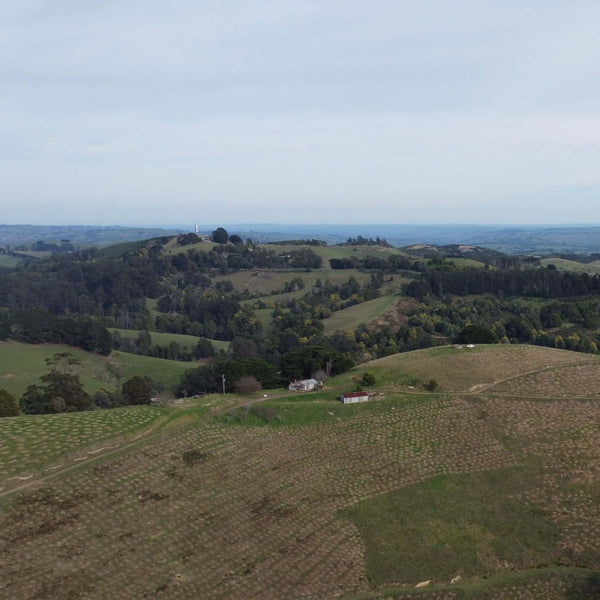
Climate Action
The forest planted at Lyrebird is legally protected for 100 years, allowing it to deliver long-term and sustainable climate action. Over its lifetime, it will capture more than 90,000 tonnes of CO2-e from the atmosphere. This is equivalent to removing 21,000 average cars from Australia’s roads for a whole year.
Greenfleet uses the Full Carbon Account Model (FullCAM) to measure the carbon uptake at our revegetation sites. This model was developed by the CSIRO and is approved by the Department of Climate Change, Energy, the Environment and Water.
Location
36 hectares in Boolarra South, Victoria.
Planting Dates
2023
Species Planted
- Eucalyptus obliqua
- Eucalyptus cypellocarpa
- Eucalyptus viminalis
- Eucalyptus strzelecki
- Eucalyptus globulus ssp bicostata
- Eucalyptus globulus
- Eucalyptus regnans
- Eucaluptus ovata
- Eucalyptus muelleriana
- Acacia melanoxylon
- Acacia dealbata
- Olearia argophylla
- Ozothamnus ferrigineous
- Pomaderris aspera
- Prostanthera lasianthos
- Mysine howitianna
- Hedycarya angustifolia
- Leptospermum lanigerium
- Melaleuca ericifolia
- Melaleuca squarrossa
- Bedfordia arborescens


